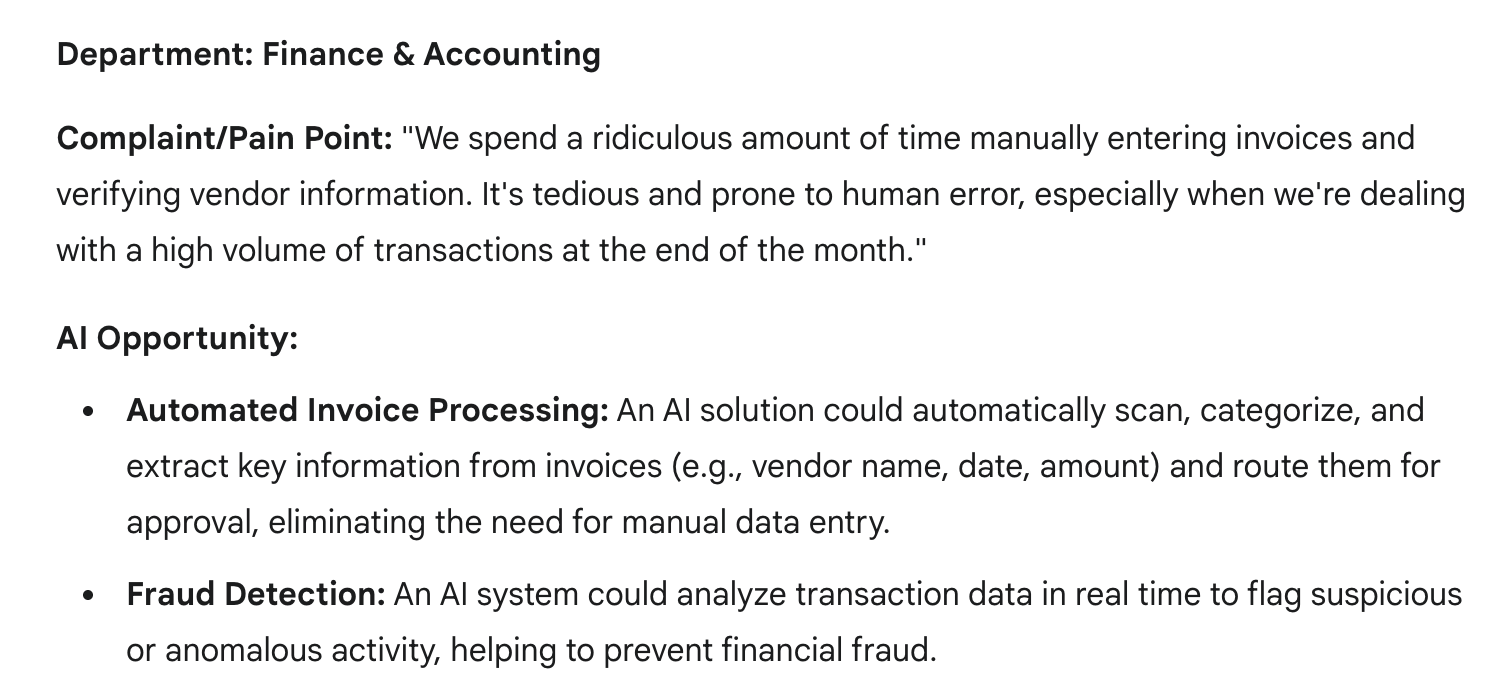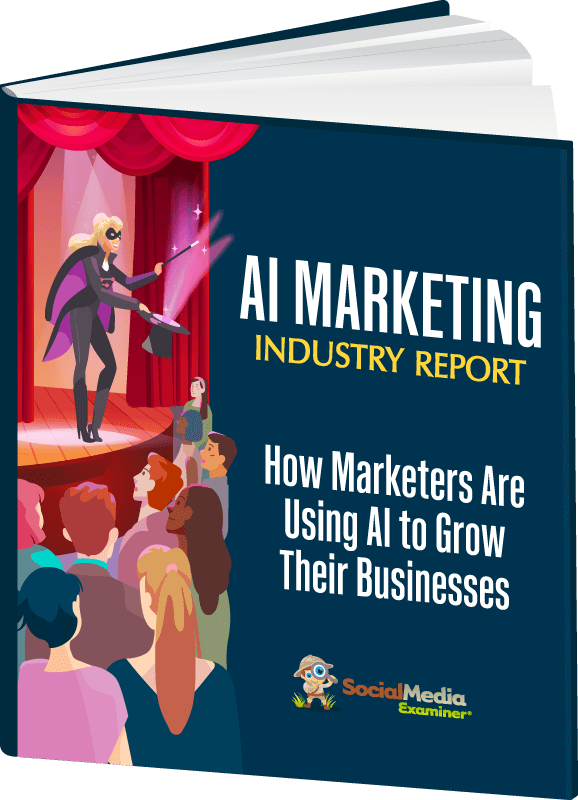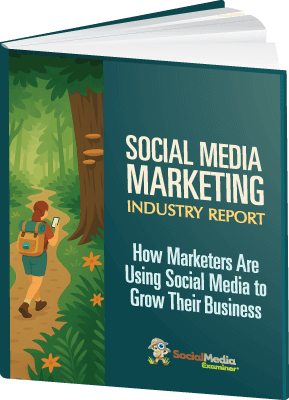Finding it difficult to get AI to work in your business? Wondering how to avoid common mistakes that can derail your AI adoption efforts?
In this article, we'll explore how traditional businesses can successfully put AI to work.
How Should Traditional Businesses Approach the Implementation of AI to Ensure Long-Term Success?
Karl Yeh, co-founder of 0260, a consultancy that helps mid-sized traditional businesses successfully implement AI and co-host of the AI Accelerator for Business show, has identified three major misconceptions that consistently undermine AI adoption efforts.
The first misconception is the assumption that AI implementation is easy. Many organizations approach AI with unrealistic expectations about the complexity involved in creating sustained adoption within a business.
The second misconception is the assumption that you can simply bolt AI onto your current processes and workflows. While this approach will yield some productivity gains and efficiency improvements in the short term. Businesses need to rebuild their processes and systems to be AI-centric, not just add AI components to existing workflows.
The third and most crucial misconception relates to change management and people's behaviors. Employees have been trained in their professions for years or decades, and each company has built processes over many years. Adding AI into these established systems becomes extremely difficult without addressing the human element.
By building internal capabilities, maintaining flexibility, and focusing on sustained adoption, traditional businesses can successfully compete in an environment where AI-native companies represent the primary competitive threat rather than established competitors making similar technology additions to existing operations.
#1: Begin with Discovery to Identify the Right Opportunities
Traditional businesses should start AI implementation with a comprehensive discovery process. This involves examining all existing processes and workflows to identify specific opportunities that align with AI's strengths: repetitive tasks, data-driven processes, and predictive activities.
Yeh recommends focusing on what he calls eye roll tasks–activities that make employees roll their eyes when they have to perform them. During discovery sessions, you don't actually discuss AI very much. Instead, you learn about how workflows and processes currently operate. This audit proves valuable whether you implement AI or not, since most businesses haven't conducted this type of comprehensive process review.
The discovery process involves sitting with departments and teams for one to three hours, listing all processes, documenting how they work, and cataloging individual operations. These sessions sometimes turn into complaint sessions, which is actually beneficial because you want feedback not just from leaders and executives, but from frontline teams dealing with these processes daily.

Yeh shares an example from a land development company where the discovery process revealed telling inefficiencies. One employee's task involved going into a folder with fifty subfolders to check if specific files existed. This person would manually click through every single folder to verify whether certain files had been generated by their system, sometimes spending one to three hours searching through different items.
Another employee at the same company had to generate five to six business intelligence reports every Monday by extracting information from multiple PDFs that were updated throughout the week. Both examples represent exactly the type of data-driven, repetitive tasks where AI can provide substantial assistance, potentially reducing these time-consuming activities by ten to forty percent or more.
Before beginning discovery, two key factors require consideration.
First, assess whether people in each department or team are ready for change, as change management represents a crucial component.
Second, evaluate data cleanliness, since you'll often encounter datasets scattered across multiple locations. Even with the best intentions, significant data cleanup may be required, and this might need to be a priority before implementing AI solutions.
Ready to Supercharge Your Marketing Strategy?

Get expert training and an unbeatable conference experience when you attend Social Media Marketing World—from your friends at Social Media Examiner.
Broaden your reach, skyrocket your engagement, and grow your sales. Become the marketing hero your company or clients need!
🔥 Save $850 on an All-Access ticket. Sale Ends Tuesday! 🔥
GET THE DETAILS#2: Create Comprehensive Discovery Summaries and Strategic Roadmaps
After conducting discovery sessions, which should be recorded to capture all details since there's too much information to take notes effectively, you develop discovery summaries for each department or team. These summaries include key themes from discovery sessions, identified workflows and processes, and connections between problems and potential AI solutions.
Beyond AI solutions, this process also reveals non-AI solutions. During workflow analysis, you often discover issues that don't require artificial intelligence at all. Yeh describes working with a company where one department spent two to three hours weekly reformatting files sent by another department. The solution was simply walking over to ask the sending department if they could output files in the needed format. They could, and the problem was solved through basic communication rather than AI implementation.
This type of discovery frequently uncovers problems that have persisted for years simply because departments made assumptions about each other's capabilities without actually communicating. Such findings represent pure communication issues that can be resolved immediately without any technical solutions.
The discovery process also identifies workflows and processes that should be completely rebuilt to be AI-centric rather than merely enhanced with AI tools. This requires a mindset shift from “how we've always done things” to “how we could do things better with AI from the ground up.” This thinking represents part of the mental transformation your workforce needs to embrace.
Each department receives a roadmap outlining six-month, eighteen-month, and longer-term goals specific to their needs. Based on all discovery summaries, you can create a comprehensive AI strategy for your entire company that includes everything discussed during the process, all potential pilots, and specific recommendations.
From the forty to forty-five opportunities typically identified during discovery, companies should select five to seven initial projects: three to four high-priority items that can receive dedicated resources and people, plus one to three processes that warrant complete rebuilding to be AI-centric. This creates a focused approach rather than a scattered implementation across different groups.
Real-World Implementation: An Accounting Company Case Study
Yeh worked with an accounting company that had six departments and developed a full strategy with discovery summaries for each. The team recommended six AI strategies, and the company accepted four to begin implementation.
One major project involved overhauling their entire manual data entry process. Previously, employees manually entered information from T-slips and bank PDFs into spreadsheets, which then connected to QuickBooks. The team built an end-to-end automation using document recognition technology.

For the technical implementation, they used Mistral‘s PDF reader, which Yeh considers among the best for optical character recognition, along with Cohere. After testing various large language models, Mistral demonstrated the best ability to recognize PDFs in different formats from various vendors and businesses, extracting required information and organizing it into proper spreadsheet headings with ninety-five to ninety-seven percent reliability for repetitive tasks.
The solution was built as an on-premise system using N8N, an open-source automation tool similar to Make or Zapier that can be hosted on servers like WordPress. This approach ensured that sensitive financial information never left the building, addressing security concerns that are paramount for accounting firms.
The company also implemented AI phone reception using Bland, a third-party voice solution designed to handle quick repetitive calls and help book consultations. This freed up human reception staff from time-consuming routine interactions while ensuring clients could still reach the company efficiently.
Both solutions addressed specific pain points identified during discovery while improving overall efficiency. The company has since moved into the scaling phase, expanding these successful pilots to broader implementation across its operations.
#3: Launch AI Implementation Pilots
When launching pilots, dedicating resources is absolutely critical. There must be a designated pilot subject matter expert, preferably with a backup person. This individual needs to dedicate actual time to the project, not handle it as a side-of-desk activity, because most pilots won't launch successfully without proper attention, even for seemingly simple prompting tasks.
AI Is No Longer Optional for Marketers—Ready to Master It?

Join over a thousand forward-thinking marketers at AI Business World—a conference-in-a-conference at Social Media Marketing World.
Get two days of practical AI training where you'll discover:
✅ Systems that 3x your output—leaving time for strategy and creativity
✅ Proven strategies you can deploy right away—no guesswork, no wasted budget
Become the indispensable AI expert your company needs.
GET YOUR TICKETS—SAVE $350Yeh illustrates this with a construction company example involving invoice consolidation. The task required taking vendor PDFs from suppliers like Rona and Home Depot and checking whether invoices on vendor statements matched invoices in their internal system. One person had to manually review each invoice against their system by code to verify the number matches.
While this seems like a straightforward AI application – uploading the PDF and CSV of statements to have AI review discrepancies, identify missing items, and calculate differences – the implementation process took one to two weeks. Someone AI-native might accomplish this quickly, but employees who don't use AI regularly or use it only for basic searches need time to develop effective prompts, adjust them, and test repeatedly to ensure reliability.
The goal is to create solutions reliable enough that you don't need to double-check results, which defeats the purpose of automation. The team tested this process with ChatGPT's O-three model and found even better results with ChatGPT-5, but the development and refinement process requires dedicated expertise and time commitment.
#4: Build Accountability Systems to Ensure AI Adoption
Beyond subject matter experts, successful AI implementation requires internal champions – people who already use AI enthusiastically and probably pressure leadership to move faster with adoption. These individuals often get pushed aside with responses like “we're going there eventually, just use it yourself for now.”
Internal champions should form a committee, not primarily for developing policies and governance, but for maintaining sustained AI adoption. Based on hundreds of business interactions over two years, Yeh has observed that without accountability systems, even the best AI strategies and solutions fail to maintain usage.
Even with perfectly functioning solutions like the accounting company's N8N PDF automation, where users only need to drag and drop PDFs into a folder to trigger the process, usage often drops after the first month. Common reasons include forgetting to use the system, getting busy with other tasks, or finding the process slightly cumbersome despite its simplicity.
This represents fundamental human behavior change and habit formation challenges. The champion committee must meet monthly to ask direct questions: Are you using the system? Why aren't you using it? Are there issues that didn't surface initially? These accountability measures are essential because most people outside the AI bubble view AI as a useful tool but not a top priority compared to work responsibilities, family obligations, and other daily concerns.
Getting people to think about and use AI more consistently requires ongoing reinforcement to achieve sustained adoption across the organization.
How to Balance Top-Down and Bottom-Up Approaches
Both mandated top-down and grassroots bottom-up approaches present dangers if implemented incorrectly. Top-down mandates can fail when leadership requires AI usage without connecting it to actual problem-solving, which is why the discovery process is crucial.
Worse scenarios occur when leaders get excited about demos, purchase tools, and enforce them company-wide without understanding real needs. Yeh describes situations where companies buy two hundred Microsoft Copilot licenses and then call for retraining because they're only seeing ten to fifteen percent usage. When asked why they purchased the tool, the response is often “we thought it would solve this problem,” but the tool doesn't address their actual pain points and doesn't align with employee needs.
Conversely, purely bottom-up approaches without coordination also fall short. While individual groups might use AI effectively, the full business benefits emerge when everyone participates in coordinated efforts. The “rising tide lifts all boats” principle applies here – everyone needs to be involved to realize complete advantages, especially when competing against AI-native companies that start with massive advantages built into their fundamental operations.
The most effective approach combines top-level support and resources with bottom-up insights gathered through comprehensive discovery processes, ensuring solutions address real problems while having organizational commitment to implementation and sustained usage.
How to Scale AI Pilots and Continue to Innovate
Scaling successful pilots requires maintaining flexibility as tools and techniques continue evolving. The construction company's invoice consolidation provides an excellent example of this evolutionary approach.
Initially, the team used ChatGPTo3 for consolidation, which significantly reduced required hours while still requiring manual drag-and-drop operations. The next iteration involved creating a custom GPT with similar instructions but easier usability through simple drag-and-drop functionality.
The third iteration leveraged ChatGPT's connectors to eliminate drag-and-drop requirements entirely. Users could simply reference files with appropriate prompts, and the system would execute automatically.
The fourth iteration tested ChatGPT's agent mode to handle manual copy-and-paste operations automatically.
Combining agent capabilities with connectors and scheduled tasks created a fully automated solution where a scheduled agent performs invoice consolidation every Friday without any manual intervention. Users conduct occasional spot checks for verification, but the process runs autonomously.
This progression from manual AI-assisted work to fully automated scheduling illustrates how pilot scaling involves continuous improvement alongside technological advancement. Each iteration builds upon previous successes while incorporating new capabilities as they become available.
This evolutionary approach ensures that businesses don't just implement AI once but continue advancing their capabilities as the technology landscape develops. It demonstrates the importance of building flexible systems that can adapt and improve rather than static solutions that quickly become outdated.
#5: Update Training and Adaptation Requirements Regularly
AI implementation requires continuous training rather than traditional one-time sessions. Unlike standard business training with learning management systems or lunch-and-learn programs, AI training needs regular updates due to rapid technological changes.
Training materials from three months ago often need updating. For example, when a company's employees primarily use ChatGPT and GPT-5 releases, prompting techniques must be adjusted because the new model operates differently and over-delivers in ways that require modified approaches.
This represents a fundamental shift for most companies, which typically conduct one or two training sessions and consider training complete. With AI, continuous education becomes necessary, and this responsibility falls to AI committees and champions. They must develop ongoing training systems to inform people about new features, tools, and methodologies.
This requirement extends beyond reviewing projects to constantly updating how people operate as tools and techniques evolve. This represents a completely different operational model for businesses, requiring constant adaptation not just of tool features but of fundamental work processes.
This continuous change requirement connects directly to the mindset and change management challenges that companies must address for successful AI adoption. Training goes hand-in-hand with developing organizational flexibility and responsiveness to technological advancement.
Karl Yeh is an AI strategist and the co-founder of 0260.ai, a consultancy that helps mid-sized traditional businesses successfully implement AI. He co-hosts the AI Accelerator for Business Show. Follow him on TikTok.
Other Notes From This Episode
- Connect with Michael Stelzner @Stelzner on Facebook and @Mike_Stelzner on X.
- Watch this interview and other exclusive content from Social Media Examiner on YouTube.
Listen to the Podcast Now
This article is sourced from the AI Explored podcast. Listen or subscribe below.
Where to subscribe: Apple Podcasts | Spotify | YouTube Music | YouTube | Amazon Music | RSS
✋🏽 If you enjoyed this episode of the AI Explored podcast, please head over to Apple Podcasts, leave a rating, write a review, and subscribe.
Stay Up-to-Date: Get New Marketing Articles Delivered to You!
Don't miss out on upcoming social media marketing insights and strategies! Sign up to receive notifications when we publish new articles on Social Media Examiner. Our expertly crafted content will help you stay ahead of the curve and drive results for your business. Click the link below to sign up now and receive our annual report!
AI Is Transforming Marketing—Are You Keeping Up?

Marketers are rapidly adopting AI to transform their work. Our new 2025 AI Marketing Industry Report surveyed over 730 marketers to reveal the tools, tactics, and trends shaping the industry, including
🔥 90% of marketers save time with AI—discover the top use cases
🔥 The 5 biggest challenges marketers face with AI and how to overcome them
GET THE AI MARKETING INDUSTRY REPORT

